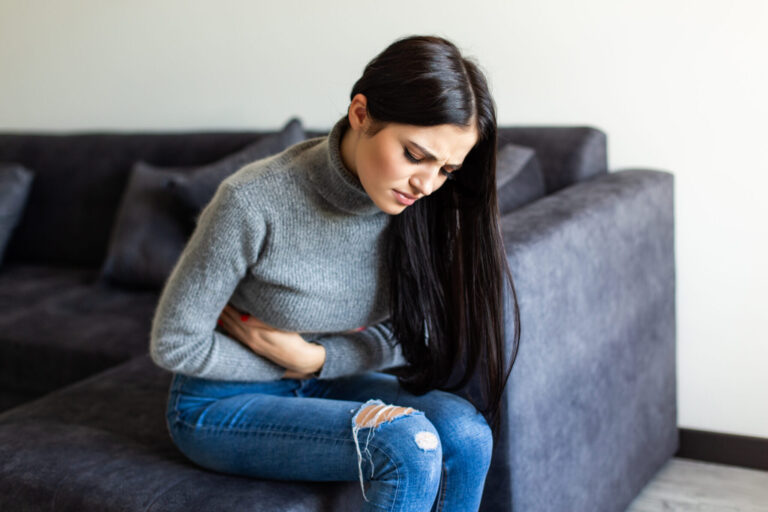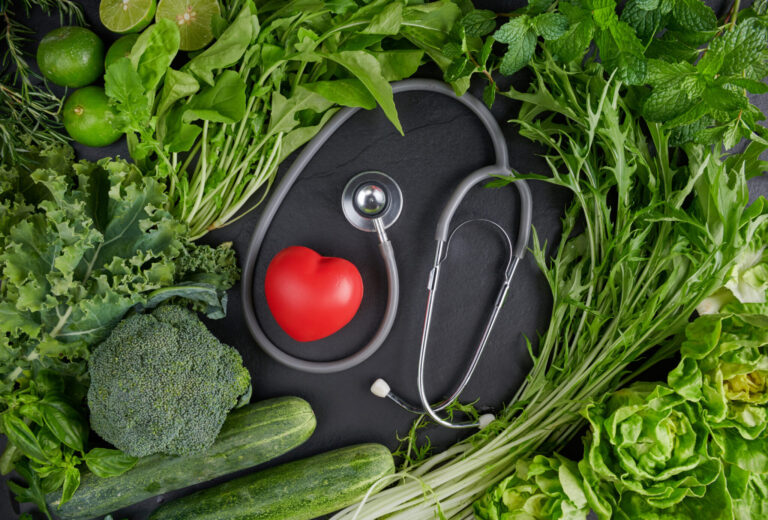Herbs For Endometriosis: How To Use Herbs To Treat Endometriosis
Are you wondering how to use herbs for endometriosis treatment? Do you want to know what dose of herbs will help reduce your endometriosis symptoms? If you would life further information about how to use herbs for treating endometriosis read on.

Contents
WHAT IS ENDOMETRIOSIS?
Endometriosis is a condition that affects the female reproductive system. In women with endometriosis, the tissue that normally lines the inside of the uterus (endometrial cells) grow outside of the uterus. Endometrial cells can be found on the outside the uterus, in or on the fallopian tubes, on the bladder, bowel and even on the diaphragm.
Endometriosis on the ovaries can form cystic lesions full of old blood called endometriomas or chocolate cysts. Endometriosis is a common condition, affecting 5–15% of women of reproductive age, who experience endometriosis symptoms that vary by type and intensity.
What are the symptoms of endometriosis?
As the endometrial cells are outside the uterus, they act in similar ways to the endometrial lining inside the uterus. Endometrial tissue builds up and bleeds a period each month. This can cause pain with periods.
Also because these lesions are located outside the uterus (i.e. they are ectopic) they cause an immune reaction of inflammation. These inflammatory immune reactions signal to the body there is injury which causes release of prostaglandins which causes pain.
Some women develop adhesions where the organs in the pelvis stick together instead of sliding past each other which can be another source of pelvic pain.
Some women with endometriosis can have difficulty becoming pregnant due to mechanical obstruction of the fallopian tubes by the ectopic endometrial tissue. Fertility can also be impaired due to the inflammation in the pelvis that endometriosis creates.
If the immune system is sending messages to the body that there is damage in the body, the immune system is chronically producing pro-inflammatory chemicals which impairs fertilizations and implantation into the uterus. These pro-inflammatory chemicals also can contribute to early pregnancy loss (miscarriage) as endometriosis can increase the risk of miscarriage by 80 percent.
Due to the close nature of the abdominal organs in the pelvis and the ectopic endometrial tissue, women with endometriosis can also experience significant bowel symptoms including diarrhea and constipation. Women with endometriosis also have irritable bowel syndrome or pain with bowel movements. The bladder can also be affected contributing to interstitial cystitis.
Can Endometriosis be treated with herbs?
There are many ways to treat endometriosis and often a multidisciplinary approach is required . Often, the primary treatment of endometriosis involves medication such as pain medication or hormone treatment such as oral contraceptives. Sometimes surgery is also used to remove endometrial lesions. Some women need support for fertility when conceiving such as IVF. Natural therapies such as herbal remedies are often used along side standard medical treatment, or because they get side effects from the standard medications and hormone therapy. There are many reasons why women use traditional herbal medicine including:
- relief of symptoms of endometriosis related pelvic pain, menstrual pain and chronic pelvic pain
- reduce inflammation in the pelvis
- to modify hormonal balance including progesterone and estrogen levels
Herbs for endometriosis related pain
Endometriosis is a complex, chronic condition. Some women do not have any symptoms (i.e. they are asymptomatic). But many women do experience pelvic pain. Pain can be related to periods (dysmenorrhea). Pain can related to endometrial cells on other organs, causing inflammation or adhesions. Pain can also occur because the nerves in the pelvic region becomes sensitized to pain or due to responses of the pelvic floor muscles to the chronic inflammation. A number of herbal remedies are used to treat pelvic pain in endometriosis including:
- CBD oil
- Pine bark
- Ginger
CBD oil for endometriosis

The endocannabinoid system is a network of receptors in the body that are activated by cannabinoids that are made by the body (endocannabinoids) or cannabinoids from Cannabis sativa, the cannabis plant. The endocannabinoid system is involved in many processes in the body, including pain, inflammation, and fertility.
CBD oil contains cannabidiol. It is becoming a popular natural treatment for a variety of chronic conditions. CBD oil is made from the cannabis plant, but it does not contain tetrahydrocannabinol (THC), which is the psychoactive component of cannabis. CBD oil is a herbal remedy that has been shown to be effective in reducing inflammation and pain. A number of studies have demonstrated that CBD oil is an effective analgesic to reduce pain including chronic pain. CBD oil is also a potent anti-inflammatory and can help to reduce inflammation in the pelvic region.
Evidence Based Medicine
Currently there is limited clinical research to support the use of CBD oil as a treatment to specifically reduce endometriosis pain. This is due to the illegal status of cannabis for much of the 21st century and also due to the bias tin medical research that means women’s health issues have been under recognized and under-researched.
Thankfully awareness of such biases and the legality of medicinal cannabis/CBD oil in many countries and states means that we can hope for further research to be carried out in the future.
However real world surveys of use of cannabis by women with endometriosis, such as this one from New Zealand, have shown that despite illegality, many women use cannabis for pain relief, to improve sleep, and to reduce symptoms of nausea and vomiting because they find it an effective treatment.
Ancient Wisdom
Endometriosis was first described by pathologist Karl Freiherr von Rokitansky in Vienna in 1860. Gynecologists John A. Sampson named the condition endometriosis in 1925. Diagnosis of endometriosis only became common when laparoscopy became widely available. Because of this it is difficult to know which traditional herbal medicines were used for endometriosis or primary dysmenorrhea (i.e. period pains in women without endometriosis). We do know that cannabis was used in childbirth and for menstrual problems as determined by archeological studies and writings from the Greek physician Pliny the elder.
Pine Bark extract
Pine bark is a natural source of proanthocyanidins. These are a type of flavonoid that is found in plants. Proanthocyanidins have been shown to be effective in reducing inflammation and pain. A number of studies have demonstrated that proanthocyanidins from pine bark are effective in reducing inflammation and pain. In a study of women with endometriosis, proanthocyanidins from pine bark were shown to be effective in reducing pain.
Most research has looked specifically at Pycnogenol, the registered trademark brand name of French maritime pine bark extract.
Evidence Based Medicine
A 2007 study of french pine bark extract called Pycnogenol published in the Journal of Reproductive Medicine. It showed that french maritime pine bark extract was able to reduce endometriosis symptoms by about 33%, including:
- dysmenorrhea
- endometriosis pain in the pelvis
- pelvic tenderness – i.e. pain when the lower abdomen/pelvic area is touched.
Pycnogenol took longer to take effect to reduce menstrual cramps than the standard treatment Leuprorelin which is a gonadotropin-releasing hormone agonist (Gn-RHa), but by 24 weeks after treatment, the leuprorelin users had a return of endometrial symptoms. Also pycnogenol had the benefit of not suppressing estrogen like Gn-RHa does, so it did not have symptoms of estrogen deficiency such as hot flashes and vaginal dryness.
The dose of pycnogenol in this study was 60mg orally once per day. The study lasted 48 weeks.
Further research would add to the evidence-base for this herb.
Ginger

Ginger (Zingiber officinale) is a plant native to Asia. The ginger spice is the roots of the plant and is commonly used as a food flavoring and as medicine. Ginger has been used for over 2500 years to treat pain in traditional Chinese medicine. It is a natural Cox-2 inhibitor. Cox-2 inhibitors reduce prostaglandin production which is elevated in endometriosis and causes pain so this is one of the likely mechanisms that ginger could be effective for endometriosis related pelvic pain.
Evidence Based Medicine
Ginger has been shown to reduce menstrual cramps. A meta-analysis (review of multiple studies) in 2016 showed that ginger is as effective as placebo and nonsteroidal anti inflammatory drugs. The effective dose found to relieve symptoms was 250mg four times per day or 500mg three times per day for the first 3 days of the period.
Ginger also has many anti-inflammatory properties, which helps modify the immune system to reduce prostaglandin production and reduce pelvic pain from endometriosis.
Ancient Wisdom
Ginger has been used for thousands of years for the treatment of many other conditions, such as colds, nausea, arthritis, migraines, and hypertension.
Inflammation in endometriosis
Inflammation is one of the main pathways that contributes to endometriosis pain, in addition to the formation and progression of endometriosis lesions. Increased inflammation recruits the immune system to promote lesion spread and growth.
There are a number of herbal remedies which reduce inflammation in the body so they turn off genes – especially nuclear factor kappa, involved in inflammation such as those that;
- recruit the immune system to promote lesion spread and endometrial cell growth
- create inflammatory chemicals such as prostaglandins which promote pain
- promote new blood vessels for growing endometrial lesions
Anti-inflammatory Herbs for endometriosis
The following herbs have anti-inflammatory properties and are helpful for reducing inflammation in treating endometriosis.
- Curcumin
- Green Tea
- Resveratrol
- White Peony
Curcumin for endometriosis

Curcumin is the main active ingredient in turmeric. It has a long history of use traditionally in Indian Ayurvedic medicine and in traditional Chinese medicine for a wide range of inflammatory conditions and for it’s ability to reduce pain.
Preclinical studies have shown that curcumin;
- inhibits the growth and spread of endometriosis lesions
- is anti-inflammatory by inhibiting the production of inflammatory chemicals such as prostaglandins
- stimulate programmed cell death (apoptosis) of endometrial cells
- prevents growth of new blood vessels for endometrial lesions
- prevent endometriosis recurrence.
Evidence-based medicine
Most current research on curcumin and endometriosis has been done on animal models of endometriosis or in vitro studies of human endometriosis cells. Much of this research indicates curcumin has a significant anti-inflammatory impact on endometriosis.
Although clinical research has been completed using curcumin to treat other inflammatory conditions such as osteoarthritis and PCOS, clinical research has not yet been completed for curcumin and women with endometriosis. Interestingly curcumin performs as well as nonsteroidal anti inflammatory drugs (NSAIDS, such as ibuprofen and diclofenac) in these studies of other conditions. Further clinical research for use of curcumin for the treatment of endometriosis is urgently needed.
Additionally, these herbal remedies are well established as having anti-inflammatory properties.
- Ginger
- Frankincense
- Cloves
- Basil
- Rosemary
- Sage
- Cannabis – ie CBD oil
Many of these are functional foods that can be added to meals to increase the anti-inflammatory content of the diet.
Green Tea for endometriosis
An antioxidant and anti-inflammatory agent called epigallocatechin gallate has been shown in rat experiments to reduce the incidence of endometriosis and improve the symptoms associated with it including an improvement in flow. Green tea extract has been shown in animal research to prevent symptoms.
Further clinical research will help determine the ideal dose of green tea or epigallocatechin gallate to relieve symptoms of endometriosis. However as drinking green tea has many other health benefits including antioxidant properties, a daily cup of green tea is beneficial for your overall health.
Resveratrol For endometriosis
Resveratrol has been shown in animal models to suppress tissue migration. In a review article of preclinical research resveratrol supplementation has displayed beneficial results including;
- decreased the number of endometriosis implants,
- decreased the volume of endometriosis implants
- suppressed proliferation,
- suppressed new blood vessel growth of the endometriosis implants
- is anti-inflammatory
- reduced endometrial cell survival
- increased programmed cell death (apoptosis).
Further research in women with endometriosis is required to understand the ideal dose of resveratrol for treating symptoms of endometriosis.
White peony for endometriosis
White peony is an herb that has been traditionally used in Chinese medicine for centuries for a wide range of conditions including menstrual disorders. White peony is known as Bai Shao Yao in Chinese and is part of the Paeonia lactiflora species.
White peony contains paeoniflorin, paeonol, and other bioactive compounds which have anti-inflammatory, antioxidant, and analgesic (pain relieving) properties.
Evidence-based Medicine
In a systematic review of the use of Chinese herbal medicine for treating endometriosis, white peony was one of the most commonly used herbs.
The authors of the review wrote that there is little research into the efficacy of white peony as Chinese medicine practice is based on individual response to herbs. According to common use, it is used as an effective way to reduce the menstrual pain associated with endometriosis.
As white peony is a safe and gentle herb, it can be used long-term to help manage the symptoms of endometriosis.
White peony also increases progesterone secretion, therefore improving the estrogen: progesterone balance.
Ancient Wisdom – What Traditional Chinese herbs have been used for endometriosis
Chinese herbs used traditionally to ease endometriosis symptoms have been described for
- Angelica root,
- Cordyalis rhizome extract,
- Frankincense,
- Licorice root,
- Myrrh resin,
- Tang gui root
Herbs to Endometrosis to improve hormone balance in endometriosis
In endometriosis there is hormonal dysregulation that is caused by and contributes to the ongoing chronic inflammation. Estrogen levels are high in endometriotic tissue. Cells are resistant to progesterone.
This creates an estrogen dominant situation where unopposed estrogen promotes endometrial cell growth. These herbs are likely to improve hormone balance in endometriosis patients.
Vitex
Vitex is a traditional remedy for gynecological conditions. Vitex is effective at reducing estradiol production via reducing follicle-stimulating hormone and increases progesterone by increasing luteinizing hormone. Studies in lab settings show that vitex may also change the behavior of estrogen receptors.
It is commonly used in Europe to treat a variety of reproductive-related complaints including PMS, menstrual pain, painful breasts, and menopause.
Although no specific clinical research has been used just looking at vitex and hormonal balance in endometriosis, it has been used for improving hormonal balance in luteal phase, especially for fertility issues. In this case a dose of 20mg of chasteberry extract per day has been used.
Ancient Wisdom
Accounts of using chasteberry among women goes back to the 4th century BCE as recorded by Hippocrates.
Herbs have been used for thousands of years as herbal remedies for menstrual pain and pelvic pain which would have included endometriosis pain. Further research, as always, is urgently needed in women’s health to demonstrate the most effective and safe doses, to not only reduce pelvic pain and ease endometriosis symptoms, but also to reduce the inflammation occurring within and surrounding the endometrial lesions and to improve the hormonal imbalance at the tissue level that contributes to further pain and inflammation.
Love + light 💚

updated 3/25/22






